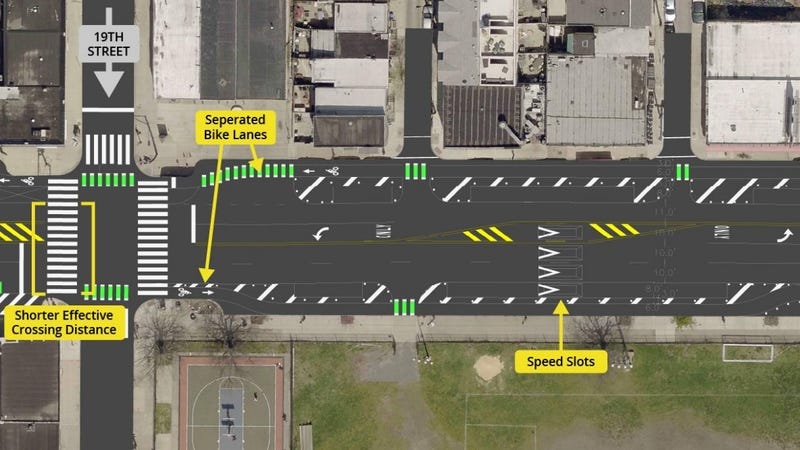
PHILADELPHIA (KYW Newsradio) — Philadelphia officials have worked for 10 years on a plan to improve safety on Washington Avenue in South Philadelphia. But just as work was poised to begin, Councilman Kenyatta Johnson has scuttled a major element of the project.
Last Thursday, the day of the last Council meeting at which legislation could be introduced in time to pass before summer break, Johnson declined to introduce a bill that would have allowed the Office of Transportation and Infrastructure (OTIS) to reduce the number of lanes on Washington Avenue where the road passes through Johnson’s district, from Broad Street to Grays Ferry Avenue.
“Where I’m at right now is supporting the five-lane plan with traffic calming measures,” Johnson said in an interview this week.
“I believe we can repave Washington Avenue and have a safer Washington Avenue with speed cushions, traffic countdown lights and delineators.”
OTIS disagrees. In a statement, it says those traffic calming measures were part of a comprehensive plan “with each element integral to the overall design.”
That includes the so-called “road diet” that would shrink the five-lane road to four lanes after 16th Street and three lanes from 20th to 25th Street, before opening back up to four lanes in the half-block to Grays Ferry.
That configuration was a compromise worked out through years of research and community meetings, but neighbor Sean Blanda said surveys and petitions show it had the support of the majority of residents.
“I think it’s willfully ignoring the will of his constituents,” Blanda said.
Blanda lives a block from Washington Avenue but says he frequently has to cross the busy road, taking his 1-year-old to day care or walking to work.
“People tend to go very fast and I’ve narrowly avoided a few collisions as a pedestrian,” he said.
Neighbor Albert Littlepage has other concerns. He thinks shrinking the lanes and slowing traffic will drive vehicles onto neighboring streets.
“The road diet could cause obesity to some of the smaller streets,” Littlefield joked.
Johnson said he was sympathetic to the argument because he sees congestion growing in the area, with or without the safety plan.
“We have significant development taking place along Washington Avenue that’s going to be a catastrophe in the long run. You have close to 2,000 new [housing] units that will be built, starting with Bart Blatstein’s project at Broad [Street] and Washington which will cause major congestion,” he said.
Reports say Blatstein's project includes a 1.8 million square-foot development with about 1,500 apartments and 66,000 square feet of retail space.
Blanda is frustrated with the last-minute nature of Johnson’s decision. The Council member never announced a position, but he simply failed to introduce the needed legislation. He compares it to the current debate about gun laws.
“There’s an easy change we can make to make kids, especially, safer and our elected officials just choose to do nothing,” he said.
Councilman Mark Squilla introduced a bill to reduce lanes in his district’s part of Washington Avenue, east of Broad Street. He declined to comment on Johnson’s position but said he is pleased with the legislation.
“The thing that I like is it’s going to have a one-year study and two-year study to determine what the outcome of these changes are,” he said.
“Are the ancillary roads going to end up with more traffic on them? Are businesses able to do business on this road with these changes? I think this is the most important thing to come out of this, is to be able to study the changes in the road and see if tweaks need to be made in the future.”
Johnson said he fears once the changes are made, it will be difficult to return to five lanes, even if the studies show the move is needed.
OTIS has not given up. Squilla’s bill is up for a hearing on June 7, and Johnson could amend it to include his district if he is so inclined at that point.
“I always keep an open mind,” Johnson said, “but currently, I believe you can accomplish making Washington Avenue safe without reducing lanes.”


